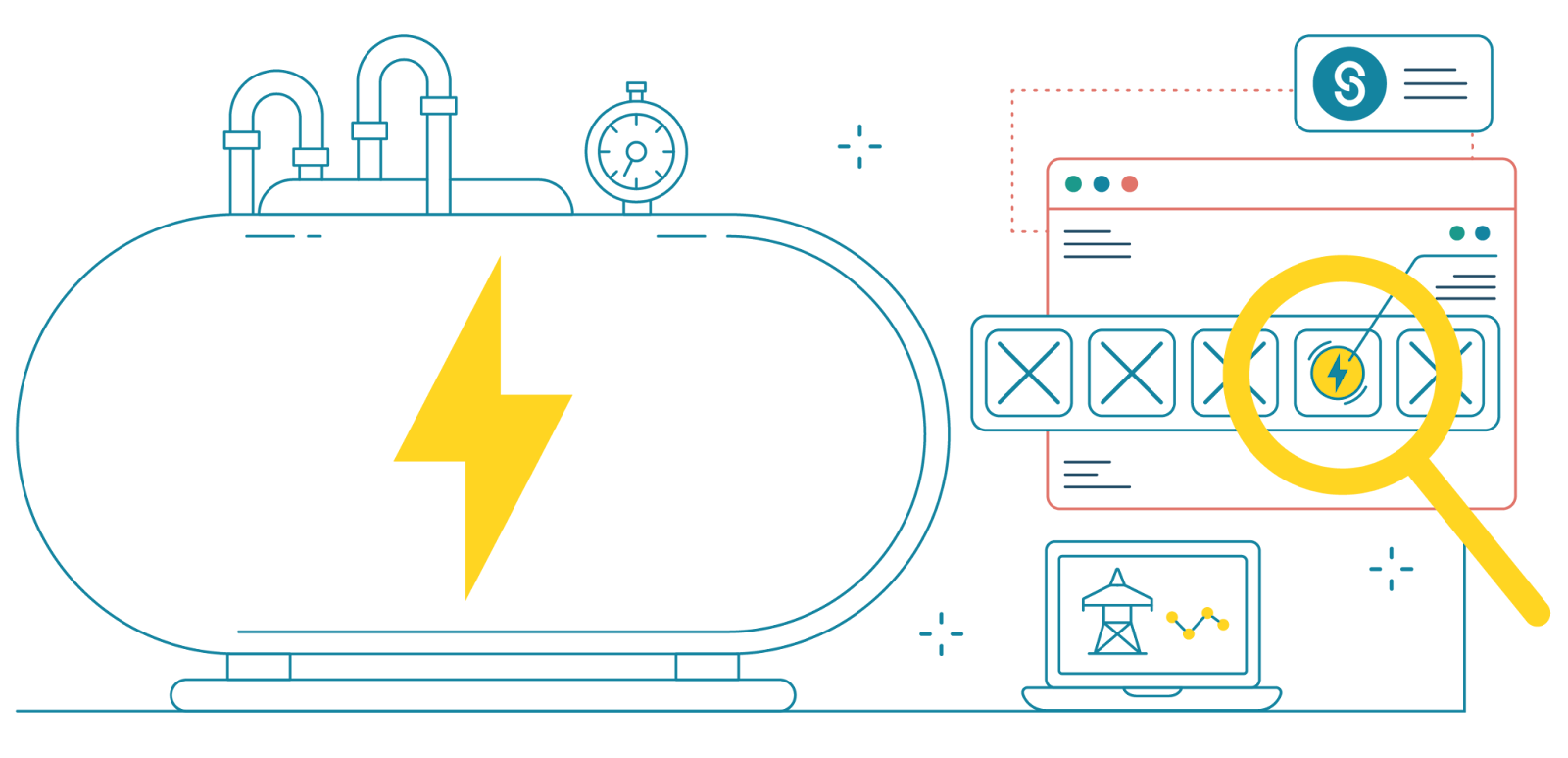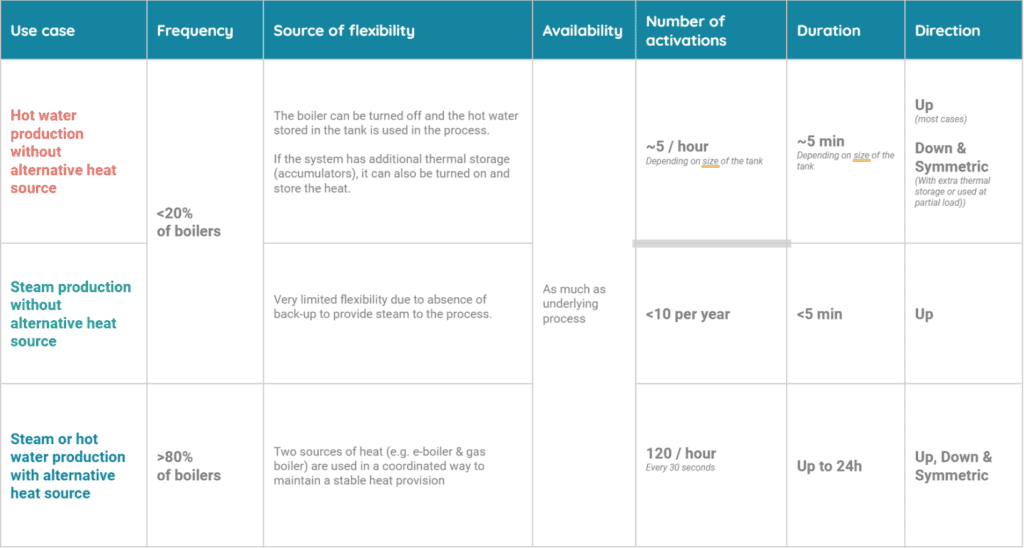E-Boilers and Demand Response: How it works
.jpg?width=768&name=Article%20Thumbnails%20-%201920x1080%20new%20website%20(7).jpg)
E-boilers and demand response - let's explore the basics. Boilers play a fundamental role in generating heat for industrial processes, but the rise of electrification and technological improvements are fundamentally changing the industry, with gas boilers increasingly being replaced by industrial electric boilers (e-boilers). This shift is raising a lot of questions from industrial businesses.
- How do rising electricity prices influence e-boilers?
- Do they risk delays due to insufficient grid capacity?
- Are they less reliable than traditional gas boiler?
These concerns can be addressed by considering the versatility and flexibility of e-boilers compared to their gas counterparts. By using e-boilers in demand response programs, industrial businesses can not only offset the risks that face e-boilers, but make them a profitable investment.
Unlock New Revenue Streams with Demand Response
Check out our essential guide to energy flexibility
Jump to:
What are E-Boilers?
Unlike gas boilers, that utilise a combustion chamber to burn fuel in order to heat water, e-boilers rely on electricity instead. Typically, there are two main types of e-boilers.
Resistance E-boilers
Resistance E-boilers are heated by electric resistances, similar to a kettle. The heat output is controlled by turning on/off these resistances. This allows the heat output to be changed in levels, according to the active resistances.
Electrode E-boilers
These e-boilers utilise electrodes to heat the water. The more water in contact with the electrodes, the greater the electricity used and heat produced. You can control the heat output by adjusting the boiler’s water level.
This fine-tuned control over the electricity used by e-boilers makes them perfect distributed flexibility resources. The thermal buffer that all e-boilers can use, makes them highly flexibility. For resistance e-boilers, that involves reducing the amount of resistances activated. For electrode e-boilers, that means reducing the flow of water within the tank. Both can run at varying percentages of their full load, making them highly flexible.
Not only does this unlock new revenue streams for industrials, but it also prevents any impact to the e-boiler's core processes, making them a perfect resource for flexibility services.

How to use E-Boilers for Demand Response
Both the speed in which e-boilers can respond to electricity changes and the ability to control their electricity consumption, makes e-boilers attractive candidates for demand response.
When assets are used for demand response, their core functions are reduced or even stopped for a short period of time. This can vary from a few seconds to a few minutes depending on the type of demand response program the assets being used for.
This limits the amount of electricity being used, but also reduces the heat being produced and affects the core processes of the resource. Thankfully, e-boilers are able to retain heat despite being deactivated, making them an ideal asset for demand response.
When e-boilers are deactivated, the water in the tank remains hot for a period of time due to the insulation of the boiler. This “buffer” means that despite being deactivated, the heat can still be used in a business’s core operations. Once reactivated, more energy may be needed to reheat the water and mitigate the loss of heat through the DR activation. This is what’s known as a re-bound effect.
With this method, e-boilers can participate in balancing markets, capacity congestion, and load shifting based on electricity prices, with an expected timeframe of the activations of under five minutes.

However, companies can increase this timeframe by using thermal tanks. These industrial tanks are often used to syphon off the water of the e-boiler, retaining the heat more efficiently. Once the e-boiler is reactivated, the water returns, reducing the re-bound effect from being activated. This allows for far greater flexibility, as the e-boiler can continue to function without affecting any of its core processes. Here, you can activate the e-boiler up to 120 times per hour. 80% of e-boilers fall into this category, providing e-boiler owners with significant benefits.
The Benefits of E-Boilers
With the growing trend of electrification and the European Union aiming to reach net-zero before 2050, it’s only a matter of time before gas boilers are phased out and e-boilers take their place. Capitalising on their benefits is one way companies can maximise their revenue and mitigate their costs.
Decarbonising
Heat generation within the industrial sector can be very difficult, especially for processes above 100°C. Thankfully, e-boilers can account for temperatures below 350°C, which makes up 50-60% of all industrial heat demand within Europe. A transition towards e-boilers would give industrials an effective and practical way to immediately begin decarbonising their processes, without the investment in major infrastructure, like on-sight storage or generation.
Financially Attractive
While the cost of electricity for e-boilers might seem high at first, it can be greatly reduced by managing the load flexibility with the help of thermal buffers. Using e-boilers during valley hours, when electricity is cheaper, can reduce their overall cost. This not only leads to a more fruitful financial position for companies, it makes them a cheaper alternative to gas boilers in the long-term.
Utilising their flexibility reduces the overall costs of e-boilers. Participating in demand response programs gives industrials a highly attractive financial stream that requires no upfront investment. What revenue is received can be used to reduce the overall cost of the capital expenditure, and the price of electricity. E-boilers that are supported by a thermal tank have an overall net cost that is less than that of regular gas boilers.
Future Proofing
E-boilers are already profitable in countries with lower electricity costs, and spare grid capacity. While the equipment and integration costs are higher than traditional gas boilers, a growing market for these resources is expected to rapidly decrease these costs. Electrification has taken hold within the industrial and commercial sectors, as the continent aims to curb their greenhouse gas emissions. Changes across society to create this change are becoming more and more frequent, making it only a matter of time before e-boilers become the norm. Investing in e-boilers becomes a future-proofing decision that can only benefit industrials that decide to participate in demand response.
E-boilers and Demand Response - Summary
The electrification of industrial assets is underway and is transforming how industrial businesses engage with the energy industry by embracing the changes in their assets and processes. Merging services like demand response are making this transition easier: with assets like e-boilers taking the front stage, industrials can not only future-proof their core processes, but invest in an energy secure future.
Sympower is a leading aggregator, with the most experience with industrial e-boilers in Europe. With over 200MW of controlled capacity, and over 1GW across their entire portfolio, it is creating a shift towards a truly sustainable energy system.
Contact us to find out how you can get extra revenue from your e-boiler.
Other articles you might find interesting
-
.png?length=500&name=Untitled%20design%20(2).png) Energy transition19 October 2023
Energy transition19 October 2023Our Take on the Clean Industrial Deal - Why Everyone Agrees that Energy Flexibility is at the Heart of Europe's Energy Transition
Read more -
 Energy transition19 October 2023
Energy transition19 October 2023How Strategic Expansion Drives Success in European Energy Markets - Q&A with Federica Tomasini
Read more -
 demand response19 October 2023
demand response19 October 2023EU elections: Opportunity or Risk for Demand-Side Flexibility? - Q&A with Mathilde Chareyron
Read more -
.jpg?length=500&name=Article%20Thumbnails%20-%201920x1080%20new%20website%20(5).jpg) Knowledge19 October 2023
Knowledge19 October 2023How to Earn Revenue with Demand Response
Read more -
 Smart grid19 October 2023
Smart grid19 October 2023The Problem with Renewables, and How to Fix It
Read more